by GaryG
Welcome to a new installment of “Behind the Lens,” the ongoing series of articles in which I share some of my watch photos and talk a bit about both the watches in question and my approach to capturing them visually.
The best thing for me about this series is that most of the watches I shoot belong to my good friends, who are kind enough to allow me to photograph their precious pieces – and who generally encourage me to wear them around a bit as well.
This time, our subject is the Patek Philippe Advanced Research Reference 5550P, a truly lovely perpetual calendar with some interesting technical twists.
If you’re like me, the first thing you noticed was that dial! Just on the golden side of silver with captivating vertical brushing that catches the light differently in various conditions and positions.
It’s clear to me that a great deal of thought has gone into the visual elements of the front of this watch, which combines classical elements like the domed and sharply pointed minor hands with more technical aspects like the lume-filled hour and minute hands and dots at the hours.
The chevron-shaped markers appear to float just slightly above the dial surface itself, adding additional interest.
To me, this watch is a great example of not necessarily needing to be thick to give a sensation of depth.
Seen straight on and lit from the side, the main dial takes on more of a matte appearance, but we are treated with clear views of the grooved and frosted subdials and the beautiful frosted moon and stars as they catch the light.
Something that I particularly like about this dial layout is that the numbers 31 and 1 on the calendar display are visible in their entirety.
On some Patek Philippe watches (for example, Reference 5205, a watch that I mostly love) the lower subdial is crowded up toward the center of the watch, with the result that the top numerals are obscured. Not so here.
In addition, take a quick look at the date numerals 5 and 27 – they are a bit smaller than the others in order to fit in. But Patek Philippe has also done something very clever with the surrounding numerals: see how they taper in size as they approach the 5 and the 27?
This use of perspective actually tricks the eye when the watch is seen in life size; it wasn’t until I reviewed the macro photos that I noticed that all of the date numerals were not the same height.
Depth of field: focus stacking
Now for something completely different! This sharp-angle view gives us a real sense for the dimensionality of the minor hands and baton markers, and to be honest was just plain fun to create.
In macro photography, one challenge is depth of field: at these distances and magnifications, the slice of space in front of the camera that is actually in focus is very thin. In addition to artistic intent, this is one reason why so many macro photos of watches have one tiny area in focus and the rest recedes into a blur.
To make an image like this one, we use “focus stacking,” which is nothing more than taking multiple photographs of the watch with different slices in focus and then using the miracle of software to stitch together all of the sharpest pixels.
It takes a while to learn focus stacking, and the results aren’t foolproof (translation: I’ve spent hours taking tedious series of photos of a given set-up only to find that the stitched-together images look awful). At its best, it allows us get these sorts of outer space encounters with the watches we love.
While looking, be sure to notice more of the details that make the dial side of this watch special: the curves and angled platforms of the minor hands, the radially beveled edges of the applied markers, and the brushing on the vertical edge of the moon phase aperture stand out to me.
Also, in this image you can see how subtle the brushing on the main dial really is, and how from some perspectives it almost vanishes. My experience in photographing this watch was that it was very easy to over-light the dial, overpowering the appearance of the brushing – to me perhaps the most appealing bit of this dial.
The photo above might be my favorite of this watch due to its dramatic presentation of the piece. It’s actually a single photo, not a focus stack, yielding an image that has more of a live look to me than most stacks.
There’s also that light scatter thrown from the top of the crystal. Believe it or not, I spent a couple of years teaching myself how to eliminate light scatter from watch photos, only to have to learn how to put it back in!
I had to grudgingly admit that many of my very sharp, scatter-free images were just a teensy bit, shall we say, sterile. The judicious use of directional lighting (in this and many other cases I actually use a small hand-held flashlight) adds a sense of depth and contrast that’s just not possible otherwise.
The Patek Philippe 5550P from a technical perspective
One thing that we haven’t considered yet is the inscription on the dial: “Advanced Research.” In this movement view, the reason for that title becomes clear, and in case you needed a hint, the nice folks at Patek Philippe have kindly provided a built-in sapphire magnifying glass to draw your eye to the right spot.
Incorporated into the base Caliber 240 micro-rotor movement is the Oscillomax silicon escapement, in turn made up of three sub-systems: the GyromaxSi balance wheel, the Pulsomax escape wheel and lever, and the Spiromax balance spring.
When it comes to Patek Philippe’s use of silicon components on this piece and others, I’m of two minds.
Patek does make well-considered arguments for the use of silicon in the balance and escapement: immunity to magnetic forces; the ability to place more relative mass on the outer edge of the balance, which increases stability through higher angular momentum; the ability to shape the escape wheel and pallet fork in very precise ways that improve the efficiency of the watch’s rate; and the elimination of the need for lubrication.
All good stuff, and measurable in an increase of almost 50 percent in the power reserve, from 48 to 70 hours when compared to a standard Caliber 240.
The silicon-enhanced movement also keeps more consistent time than the standard version as the mainspring goes from fully wound to unwound.
At the same time, I have considerable sympathy for the arguments of watchmakers who note that (at least in today’s world) silicon parts are the result of an industrial process and cannot be replicated using traditional watchmaking techniques.
While future owners of these Patek watches may not have to worry too much about the availability of these very specific spare parts, there is something about the potential “non-replaceability” of key components of a watch that gives me a bit of pause.
More important to me is the question of coherence: do these particular silicon parts fit into the otherwise very traditional perpetual calendar that is the 5550P? Here, I’m not so sure.
Patek Philippe’s more recent use of silicon in sports watches such as the Reference 5990 Nautilus Travel Time Chronograph and the Reference 5200 Gondolo 8 Days, in which the longer power reserve the silicon enables is integral to the concept of the watch, seems more in character to me than the use of silicon components in the 5550P.
And I have to confess that I’m not a fan of that sapphire “Cyclops” magnifier over the 5550’s balance.
To offer a more extreme example, the introduction of silicon escapement wheels in the Ulysse Nardin Freak, with its unique movement architecture, seemed the most natural thing in the world to me; dropping silicon parts into the very traditional Patek Philippe Caliber 240 architecture, despite the apparent functional benefits, seems more jarring.
From a collector’s perspective, it seems quite likely that this first-ever appearance of a full silicon balance and escapement system in a Patek Phillipe watch will turn out to be an enduring landmark; from this collector’s perspective, however, I’m attracted first and foremost by the beauty of the dial side of the watch.
Getting back to the photography, I hope you will agree that the judicious use of scattered light, in this instance thrown from the left side, seems to work just fine for movement shots as well.
All good things, as they say, must come to an end. In this case, I returned the 5550P to its generous owner, and until I see it again I have these photos to remember it by – as, now, do you!
Quick Facts Patek Philippe Reference 5550 Perpetual Calendar Advanced Research
Case: 37 mm platinum with the brand-typical diamond between the upper lugs signifying the platinum case
Movement: automatic Caliber 240 Q Si with Oscillomax silicon balance and escapement
Functions: hours, minutes, seconds; 24-hour indicator; perpetual calendar with leap year indicator; moon phase
Price: recent auction price (Christie’s, November 2013) $108,000; original retail price $109,000 in 2011, the year it launched at Baselworld
Limitation: 300 pieces
* This article was first published on August 13, 2014 at Behind The Lens: Patek Philippe Advanced Research Reference 5550P Perpetual Calendar.
You may also enjoy:
Big Fish: Behind The Lens With Unique And Rare Salmon-Dialed Patek Philippe Perpetual Calendars
Behind The Lens: The Ultra-Rare Patek Philippe Reference 5070J-013.
Leave a Reply
Want to join the discussion?Feel free to contribute!





















































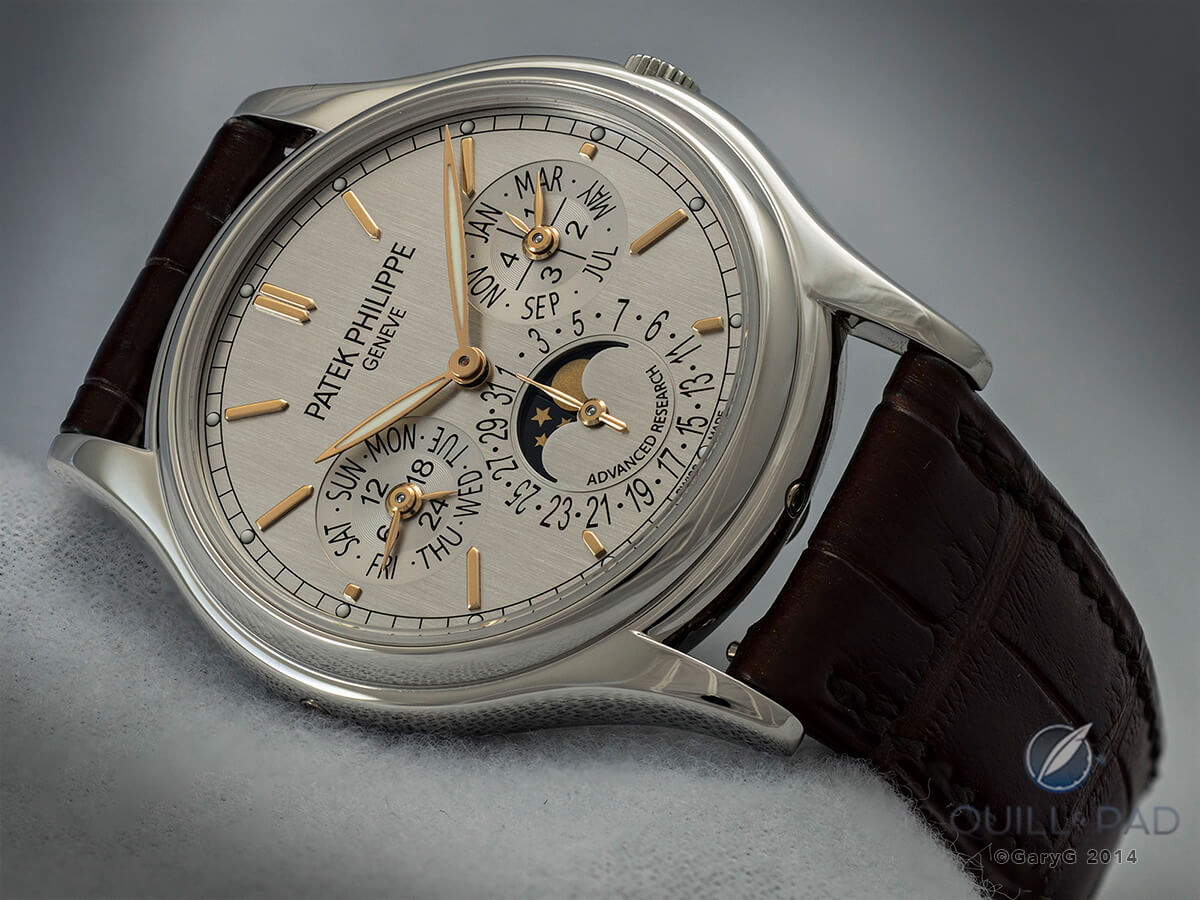
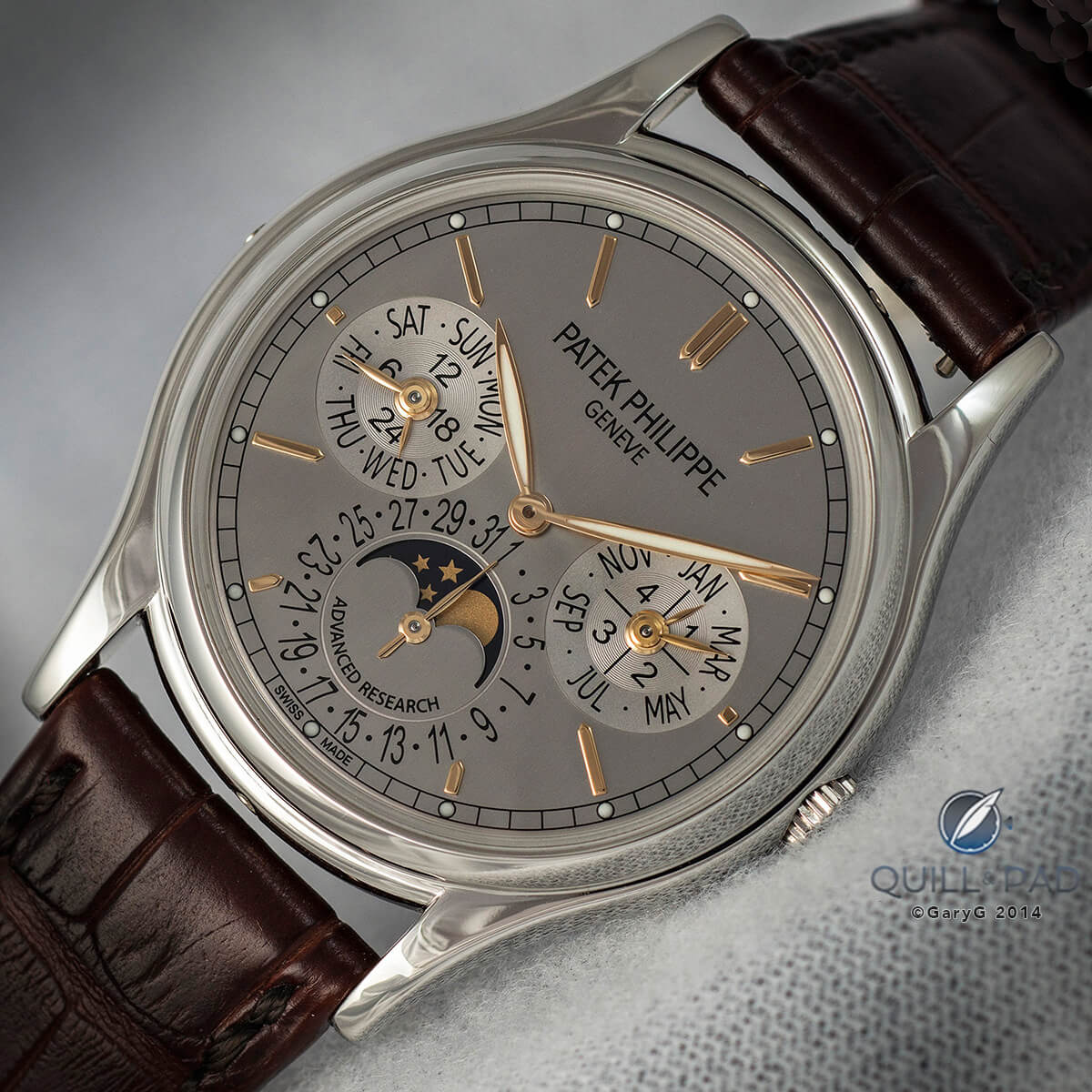
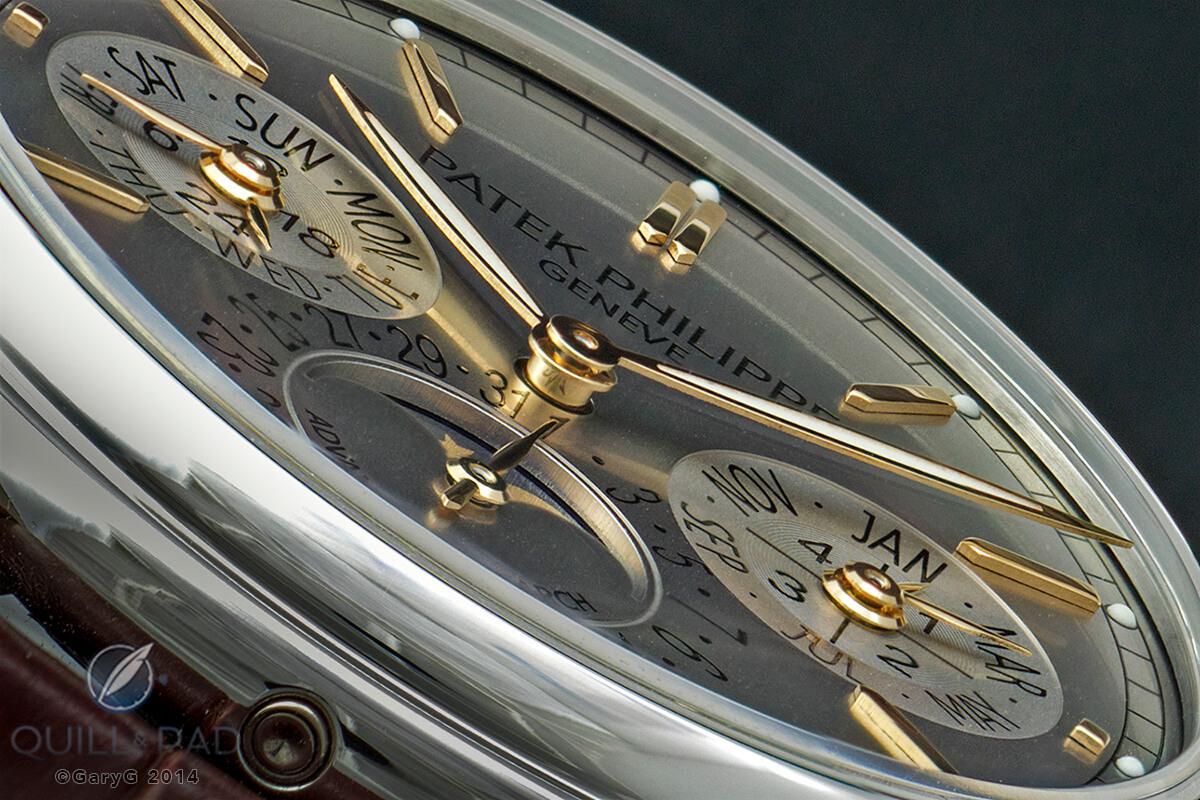
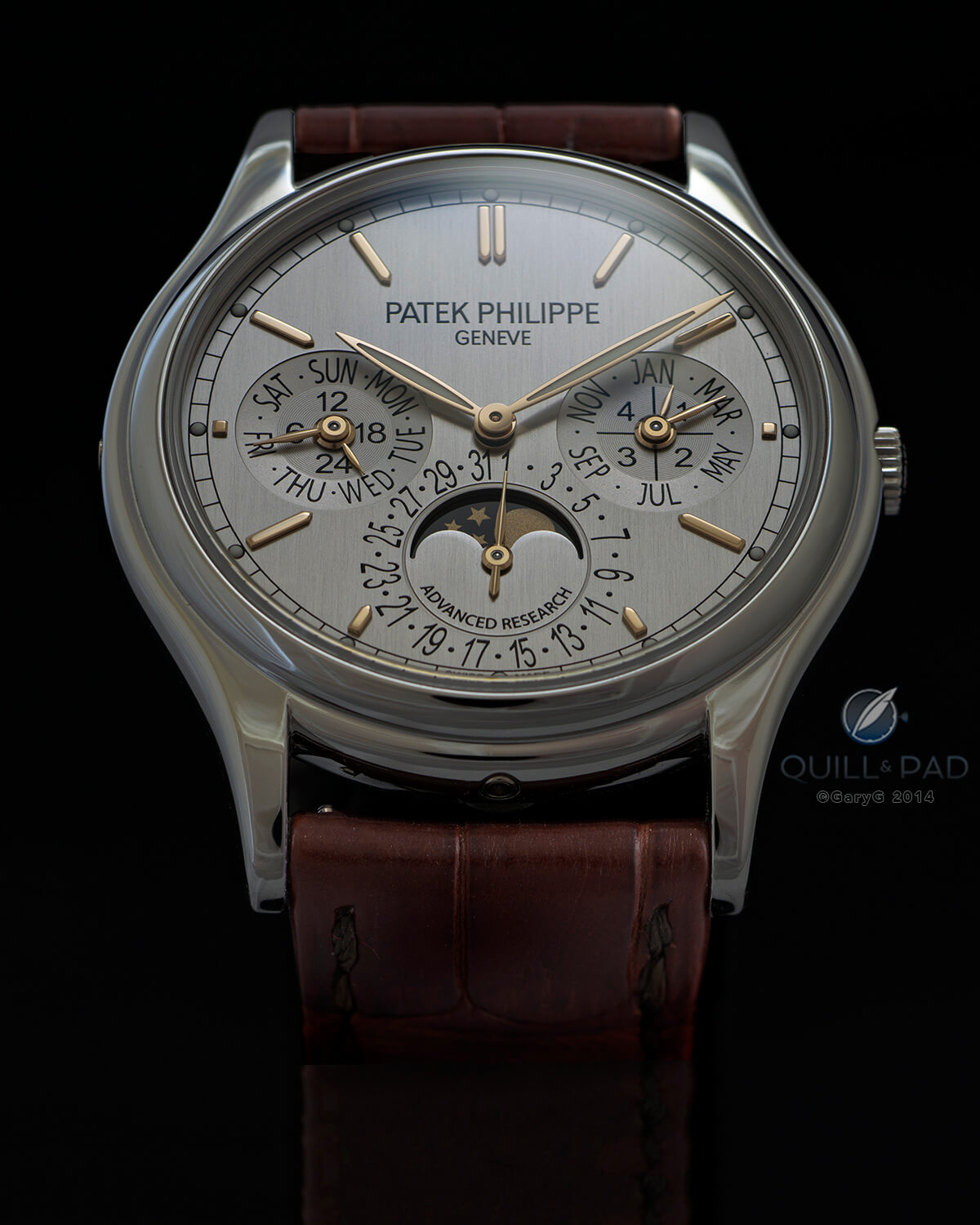
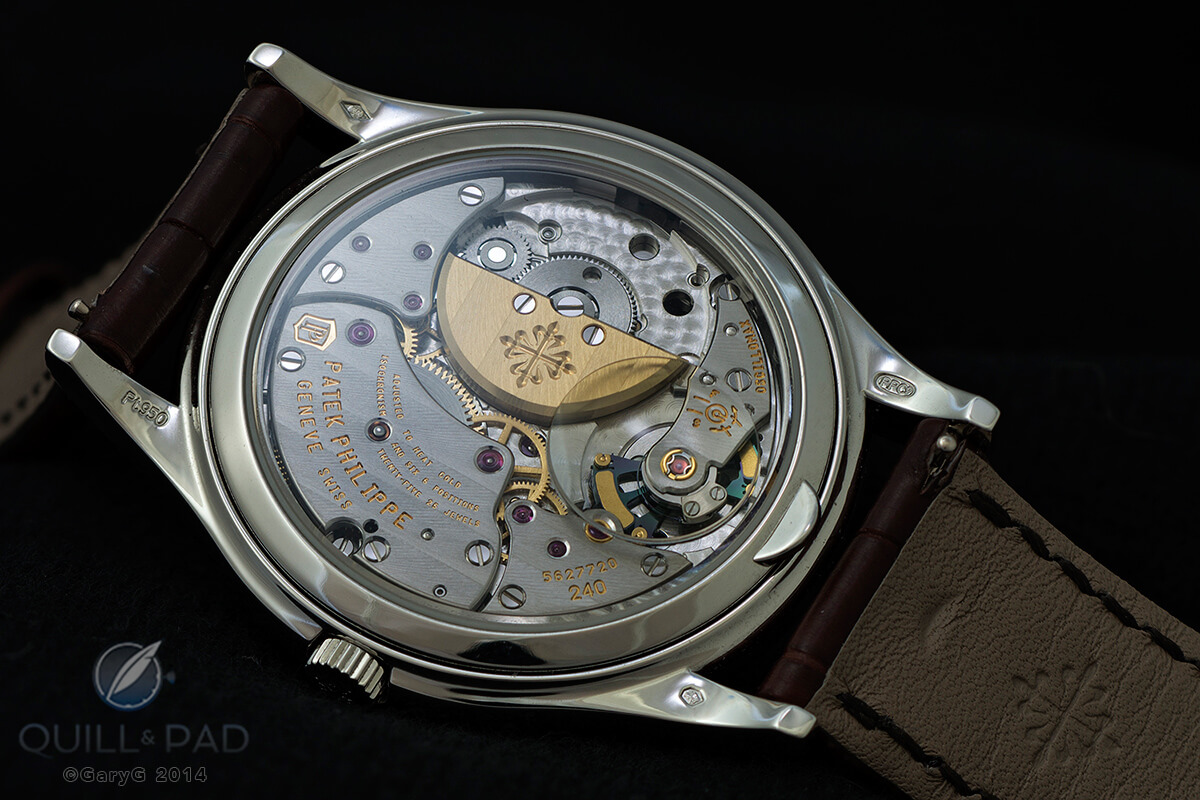
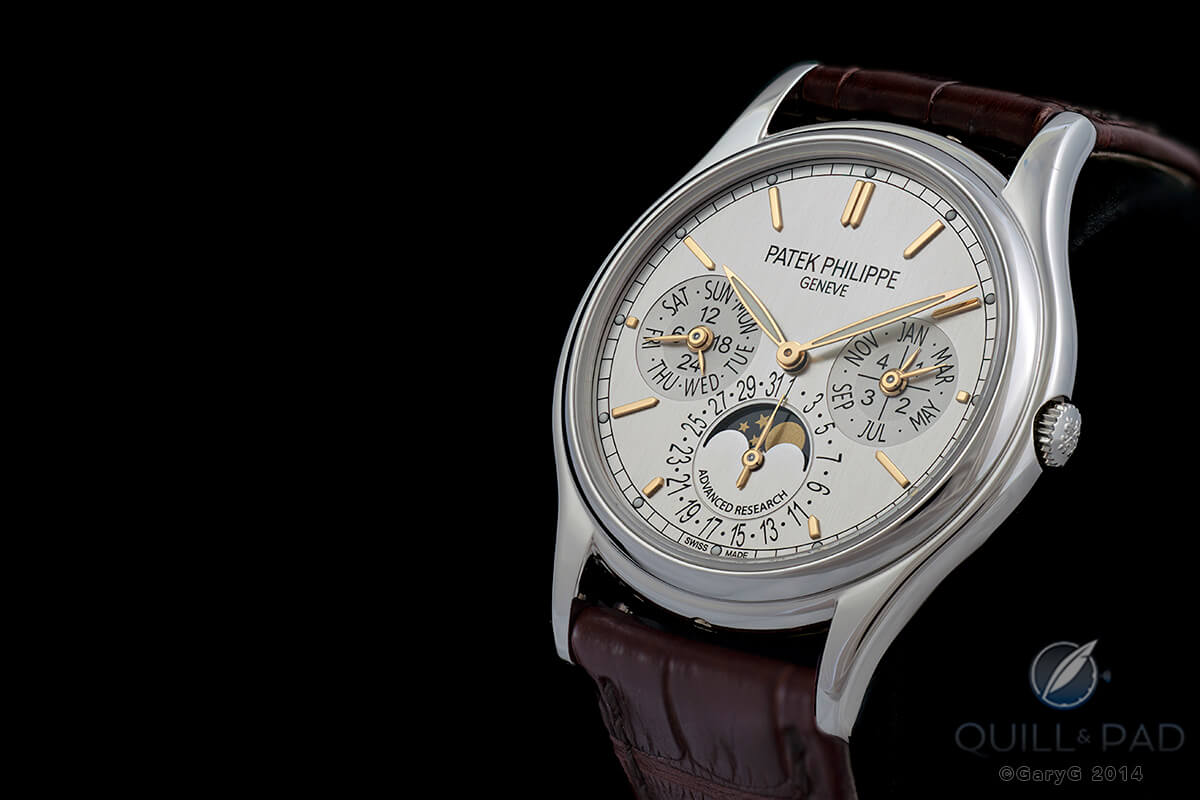
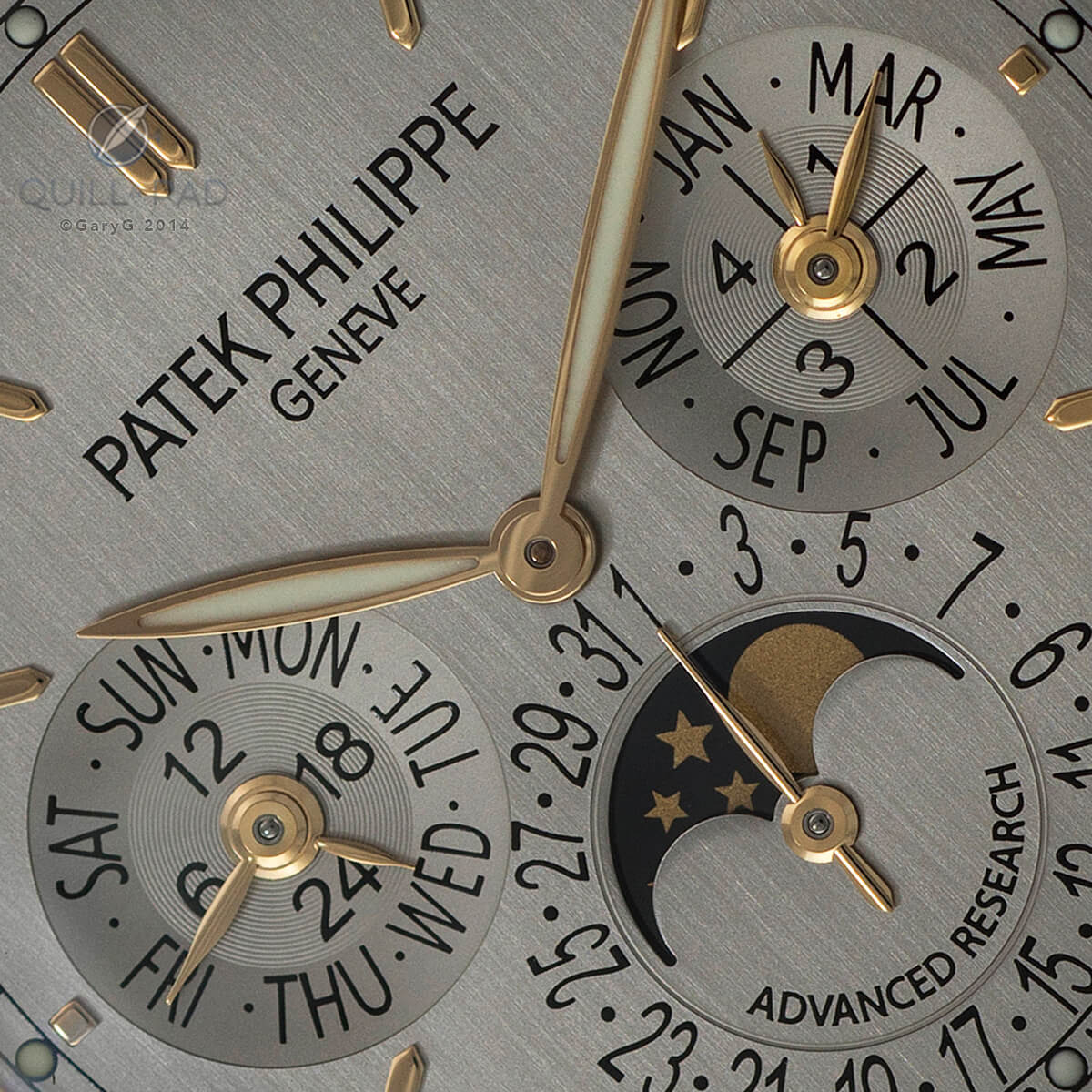
Magnificent article. Could you share your camera and lens? Thanks!
I have 18 caret antic watch and I want to sell it.Please find me a buyer.Thank you!!
Sorry — not my specialty. Good luck!
Please send me the information including your asking price.
Sorry — not my watch!
Thanks, James! My articles over the past several years have been done using a Hasselblad X1D II with the XCD 120 macro lens. At the time of this original article in 2014, I was using a Nikon D810 with the Nikkor PC-E 85mm tilt-shift lens. Both great tools for macro shooters!
Best, Gary
The technical aspects on this watch are incredible, but what I find even more pleasing about this watch is that it doesn’t try to look like a watch called “advanced research.” The technical advancements do not trigger a need for Patek to make a watch whose aesthetics could be called advanced or futuristic. Patek doesn’t sacrifice it’s simple elegance to justify the results of extensive design and research.
Great points, Alexander — a simple 3940-style piece draws on the past while pointing to the future, and that brushed dial is just fantastic IMO.